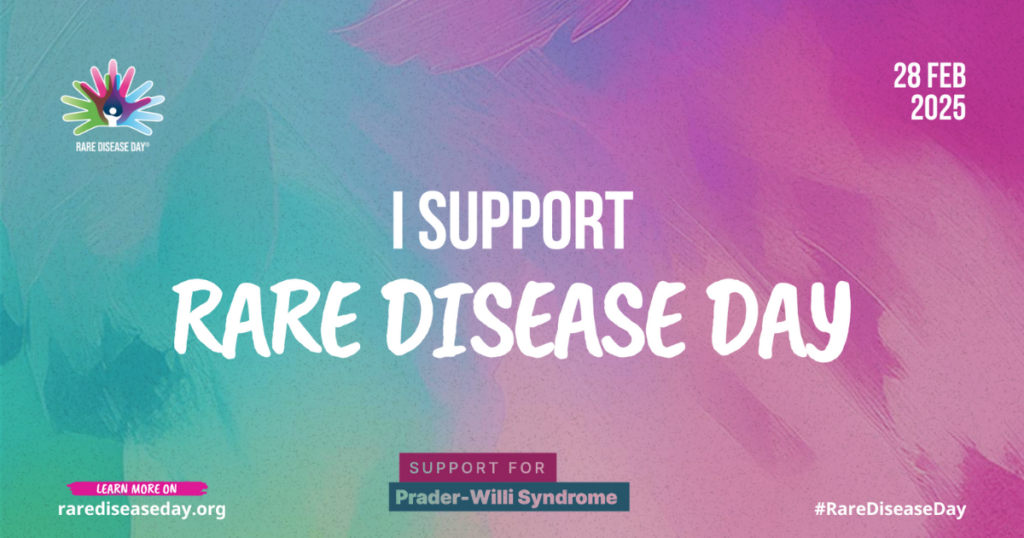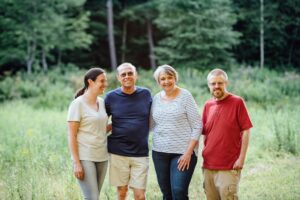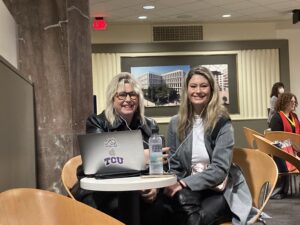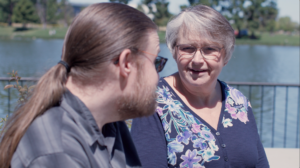Every February, the rare disease community (and their loved ones) join together for Rare Disease Awareness Month, a time dedicated to raising awareness and supporting the millions of individuals living with rare conditions. While the entire month focuses on education and advocacy, Rare Disease Day, observed on February 28th, serves as a universal day to foster understanding, spark conversations, and connect communities around rare diseases, such as Prader-Willi syndrome (PWS).
This month offers a chance for individuals and families affected by rare diseases to unite and share their stories with the world. However, Rare Disease Day is not just about awareness – it’s also about recognizing the lived experience of those affected, their struggles, and their resilience. It’s about connecting the broader community to the often-hidden realities of living with rare diseases.

The Realities of Living with Prader-Willi Syndrome
Prader-Willi syndrome is a rare genetic condition with a birth prevalence of 1/10,000 to 1/30,000, and an estimated prevalence of approximately 10,000 to 20,000 living individuals in the United States. It’s a condition that presents ongoing, complex challenges that require constant vigilance, understanding, and care.
For many living with PWS, each day can be marked by the constant struggle to manage the defining features associated with PWS such as insatiable hunger, growth hormone deficiencies, and behavior challenges.
Hyperphagia impacts nearly every aspect of an individual’s life. Unlike typical hunger, hyperphagia does not diminish with food intake, making it one of the most difficult symptoms to manage long-term.
Caregivers of individuals with PWS report that managing hyperphagia is the most challenging aspect of the syndrome. 95% of families affected by PWS also reported significant reductions in quality of life due to food-related behaviors.
This unrelenting hunger can result in significant emotional distress, compulsive behaviors, and increased health risks. For individuals with PWS and their families, food security and environmental controls are necessary to ensure safety.
These daily challenges can include:
- Persistent talking about or seeking food – A continuous preoccupation with meals, snacks, or opportunities to eat.
- Bargaining, manipulating, or sneaking to obtain more food – Using persuasion, deception, or strategic behaviors to gain access to additional food.
- Emotional distress when denied food – Strong reactions, including anxiety, anger, or meltdowns, when food requests are refused.
- Foraging, sneaking, or stealing food (even from trash) – A compulsion to seek out and consume food from any available source.
- Risk of extreme overeating, leading to severe medical issues – The inability to regulate food intake can lead to life-threatening consequences, requiring constant monitoring.
These food-related challenges add another layer of complexity to daily life for individuals with PWS and their caregivers. Managing hyperphagia requires a structured environment, unwavering supervision, and a deep understanding of behavioral strategies to maintain safety.
Rare Disease Awareness Month provides a much-needed opportunity to highlight the struggles of people with Prader-Willi syndrome, amplify the voices of those affected, and foster a sense of understanding and empathy across communities.
PWS impacts both the physical and mental development of those affected, and while the condition’s symptoms may seem straightforward, the reality is far more complicated. It’s a daily navigation of complex physical, mental, and emotional challenges. The individual’s experience with the condition can vary, but for most families, these realities require 24/7 attention, coordination, and support.
Understanding PWS Through Personal Stories
One of the most powerful ways to understand the realities of Prader-Willi syndrome is through the stories of those living with it. Personal stories offer a raw and unfiltered look at the daily struggles and triumphs that families experience as they navigate PWS. These stories shed light on the emotional toll of living with a rare disease and the ways that families cope, adapt, and find strength.
By sharing these stories, individuals and families can inspire others to learn more, offer support, and take action. These stories are not just about hardship – they are about resilience, love, and the determination to overcome obstacles, no matter how daunting they may seem.
The Role of Support and Advocacy in Those Affected by Rare Diseases
Support networks and advocacy play a critical role in the lives of those with PWS. The emotional and social aspects of living with a rare disease can be extremely difficult. For many families, finding a sense of community can be life-changing.
Support groups, both online and in-person, provide a safe space for families to share their experiences, ask for advice, and offer encouragement. These communities provide a network of understanding, where individuals can find solidarity in the shared challenges they face.
For the PWS community, advocacy efforts help amplify the voices of those affected, ensuring that their struggles and needs are recognized. These efforts are vital in helping to reduce stigma and foster greater public understanding. By advocating for increased awareness and resources, affected families play an essential role in strengthening the PWS community and ensuring that no one feels alone in their journey.
The Importance of Rare Disease Day
Rare Disease Day is an annual global event dedicated to raising awareness and understanding of rare conditions like PWS. It serves as a reminder of the many individuals and families who live with rare diseases that often go unnoticed or are misunderstood.
While Rare Disease Day is an opportunity to spotlight specific conditions, it’s also a call to acknowledge the collective struggles faced by rare disease communities. For individuals living with PWS, awareness is crucial—not just for the medical community, but also for the broader public. The more people understand the challenges of living with a rare disease, the better equipped they are to offer support, empathy, and resources.
On Rare Disease Day, families, caregivers, advocates, and researchers come together to share their experiences and raise awareness. But perhaps most importantly, Rare Disease Day serves as a platform for creating connections. It’s about ensuring that those with rare diseases feel seen and heard in a world where they may otherwise feel isolated.
Beyond raising awareness, Rare Disease Day is also a time for advocacy. This year, PWS advocates will be traveling to Washington, DC, to participate in Rare Disease Week alongside other rare disease advocates and individuals. Hosted by the EveryLife Foundation for Rare Diseases, Rare Disease Week on Capitol Hill is a critical opportunity for advocates to meet with lawmakers, share personal stories, and push for policies that improve the lives of those affected by rare conditions. These efforts are instrumental in shaping legislation that addresses challenges like access to treatment, healthcare funding, and support services for families.
Advocacy efforts – whether through personal storytelling, legislative engagement, or community outreach – play a vital role in building a future where rare disease patients receive the care, research, and support they deserve.
Raising Awareness Beyond Rare Disease Day
While Rare Disease Day offers an opportunity to focus attention, awareness efforts must extend far beyond just one day. For families affected by PWS, every month is Rare Disease Awareness Month. The realities of living with PWS are an everyday struggle. Raising awareness throughout February is an important step in encouraging others to learn more, understand the unique challenges that come with rare diseases, and show their support. But ongoing education and community-building are necessary to continue fostering empathy, support, and inclusion.
For those unfamiliar with PWS or other rare conditions, the month of February offers a chance to learn, ask questions, and get involved. Whether it’s reading personal stories, attending events, or simply sharing information, every small action can contribute to making a difference.
Get Involved and Stay Informed
As Rare Disease Day 2025 approaches, consider how you can get involved. You can support the community by reading more about Prader-Willi syndrome, sharing stories on social media, or donating to PWS-related causes.
By learning more about PWS and spreading awareness, you can help make a tangible difference in the lives of individuals and families who are affected. Awareness isn’t just about gaining knowledge – it’s about fostering a culture of empathy, inclusion, and support.
Together, this community is helping those living with PWS feel seen, heard, and supported, not just on Rare Disease Day, but every day.
Frequently Asked Questions
When is Rare Disease Day?
Rare Disease Day is observed annually on the last day of February—February 28 (or February 29 in leap years). February 29 is the rarest day on the calendar, occurring only once every four years, making it a symbolic choice for a day dedicated to rare diseases.
What is the difference between Rare Disease Day and Rare Disease Month?
Rare Disease Day is a global awareness day held on the last day of February, while Rare Disease Month (February) is dedicated to raising awareness, sharing stories, and advocating for rare disease communities throughout the entire month.
What is the ribbon color for rare diseases?
The ribbon color for rare diseases is zebra-striped, symbolizing the uniqueness of rare conditions.


